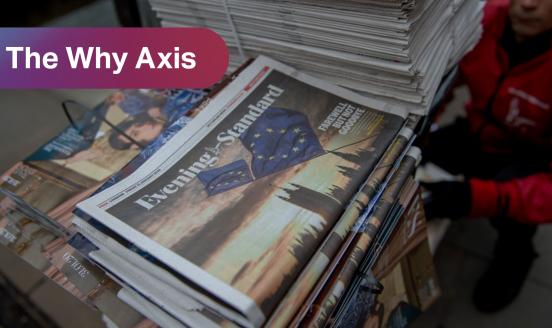The US infrastructure investment debate
What’s at stake: Infrastructure investment has been and will continue to be a prominent campaign theme in the run up to the US elections. Both Hillary
Larry Summers says the issue now is not whether the US should invest more but what the policy framework should be. He calls for the adoption of a major infrastructure investment program by Congress in spring 2017, whatever the election result. Some infrastructure priorities can clearly be considered a responsibility of the private sector, and there is also a case for experimenting with the mobilisation of private capital for infrastructure that has traditionally been a public-sector preserve. However, the reality that government borrowing costs are much lower than the returns demanded by private-sector infrastructure investors should lead to caution. Only when private-sector performance in building and operating infrastructure is likely to be better than what the public sector can do is there a compelling argument for privatisation. Nevertheless, Summers admits that scepticism about the efficiency of infrastructure investment is legitimate. While there is no silver bullet for this problem, transparency of the type adopted by the Obama administration’s fiscal stimulus should become the norm.
Ed Glaeser has an essay in the City Journal, which takes a more sceptical tone. He argues that the “progressive romance” with infrastructure spending is based on three beliefs. First, that it supercharges economic growth. Second, that infrastructure spending is an ideal government tool for fighting unemployment during recessions. Third, that infrastructure should also be a national responsibility, led by Washington and financed by federal tax revenues. Glaeser thinks that none of this is correct. While infrastructure investment is often needed when cities or regions are already expanding, too often it goes to declining areas that don’t require it and winds up having little long-term economic benefit. As for fighting recessions, which require a rapid response, it is hard to get infrastructure projects under way quickly and wisely enough.
Moreover, centralised federal tax funding of these projects makes inefficiencies and waste even more likely. Infrastructure advocates downplay standard cost-benefit analysis in favor of broad macroeconomic surveys, which look at the statistical link between public-infrastructure investment and overall economic activity. But Glaeser argues that this approach can produce imprecise—and even wildly misleading—results. America needs an infrastructure renaissance, but it will not get it by the federal government simply writing big checks. Glaeser thinks a far better and fairer model would be for infrastructure to be managed by independent but focused local public and private entities and funded primarily by user fees, not federal tax dollars.
Randal O’Toole argues that most infrastructure funded out of user fees is in good shape. The infrastructure in the worst condition is infrastructure that is heavily subsidised, because politicians would rather build new projects than maintain old ones. That suggests that the US government should spend less, not more, on new infrastructure. O’Toole disagrees with Summers’ underlying assumption that infrastructure spending always produces huge economic benefits, arguing that the rates of return hypothesised by Summers are “pure fantasy”—especially if it is government that decides where to spend the money. Making infrastructure spending a priority would simply lead to more grandiose projects, few of which will produce any economic or social returns. Instead of an infrastructure crisis, O’Toole argues, the U.S. is facing a crisis over who gets to decide where to spend money on infrastructure. Should the impetus lie with the private or the public sector?
Noah Smith is against deliberately underestimating the upside of fixing roads and bridges. Infrastructure investments have elements of public goods, and this is something that the private sector, left to its own devices, cannot or will not provide enough of. First, government can solve the coordination problem involved in building roads. Second, private companies may find it difficult to reap the full economic benefit from building roads, if the level of congestion is low. Finally, transportation networks and other infrastructure allow businesses to cluster together, which produces agglomeration externalities. The US should work on eliminating the source of excess costs, whether these come from burdensome regulation, costly land acquisition, inefficient environmental review processes, inflated union wages or a combination thereof. But if it waits until the costs decline, the cost of maintenance from a crumbling infrastructure could rise enough to cancel out much of whatever cost savings can be made by improving the system.
Noah Smith and Tyler Cowen had a conversation about the government’s role in boosting growth, during which they also covered the infrastructure issue. Smith sees the possibility of a demand gap as adding upside, but not much downside, to infrastructure spending. He argues that if there happens to be a lingering demand shortage, infrastructure spending would yield an added benefit. If there is not, then infrastructure spending will raise interest rates (crowding out private investment) and/or inflation, but there is the option to dial back spending if that case materialises. Cowen also declared that he favours more infrastructure spending, provided it is done wisely. There is a good supply-side case for that, but there also seems to be a tendency to present it as a free lunch, which it is not. Cowen had argued in a previous post that the opportunity cost of additional government borrowing is not zero, even if government borrowing rates were literally zero.
Bradford Delong says that the case for greater infrastructure investment is close to orthogonal (unrelated) to the case for bigger government deficits ending in a larger target national debt, and that both are close to orthogonal to the case for larger swings in the government's fiscal balance (bigger surpluses in times of boom to create the fiscal space to run bigger and more stimulative deficits in times of recession). Delong argues that Summers is making a case that is intellectually irresistible for the first only, but the cases for the second and third are intellectually irresistible as well.
John Cochrane is negative, arguing that while America’s infrastructure could use patching, stagnant growth is not centrally the fault of bad roads and bridges. The Obama administration has been after “infrastructure” stimulus since 2009, but it is difficult to build infrastructure these days, due to the endless regulatory reviews and legal challenges involved. In return for more spending, Clinton could have offered serious structural reforms: a repeal of the Davis-Bacon act (which sets out wage requirements to be respected in construction contracts where the US is a party), time limits on environmental reviews, serious cost-benefit analysis, and so forth. Such a package would have been irresistible.



